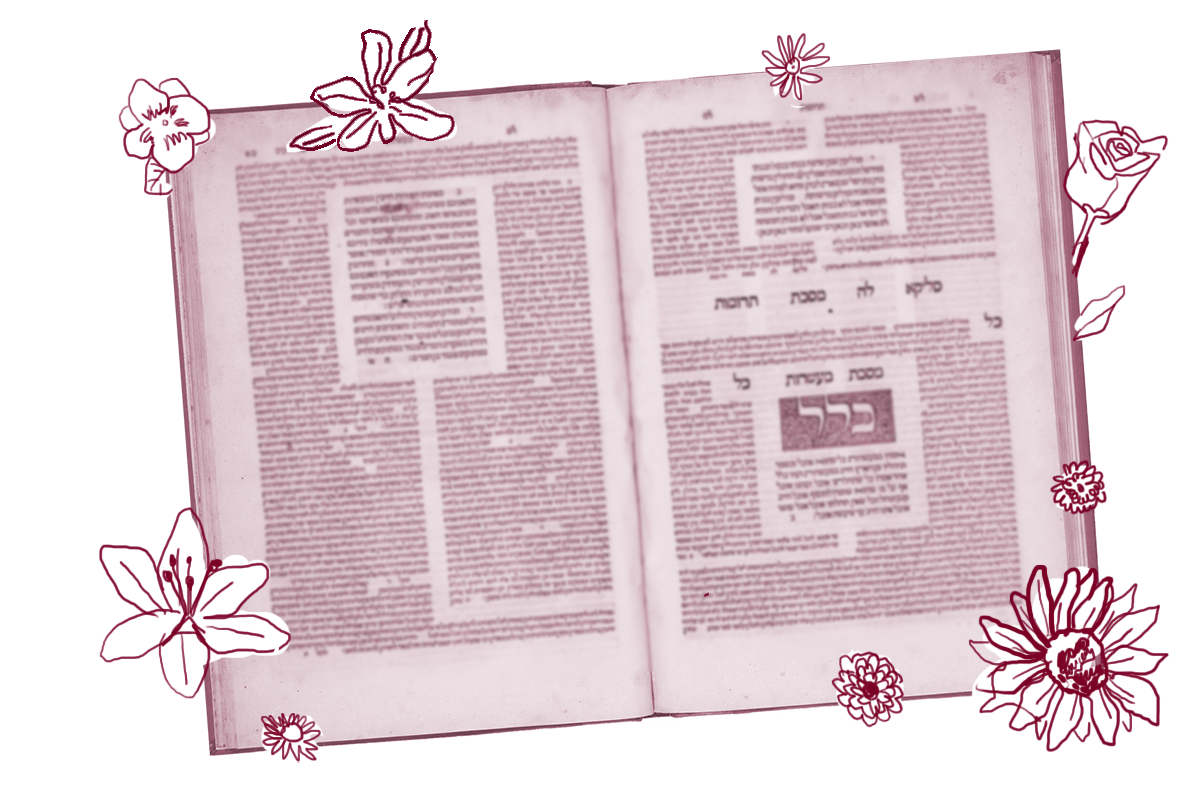There were many different opinions in the Talmud as to the layout of the Second Temple and, in the case of the last few pages, the myriad surrounding courts and chambers that made up the complex. In today’s daf, the sages continue to discuss the chambers surrounding the Hall of the Hearth, chambers visited by the high priest in the course of his duties on Yom Kippur. One point of confusion is the location of the Chamber of Lambs, where sacrificial lambs were pent up before the slaughter. (We are not told specifically why different animals were kept in different chambers — perhaps for the practical reason of minimizing possible cruelty between species.)
We learned yesterday that there are four chambers surrounding the Hall of the Hearth, though two different mishnahs identified them slightly differently. Both mishnahs however mention a Chamber of Lambs and our Gemara tries to pinpoint the precise location. (You will see in the Tosafot commentary diagrams of different floor plans that illustrate the conflicting opinions.) The Gemara suggests that there really is no discrepancy between the two mishnahs in identifying the location of the Chamber of Lambs, it is simply that each mishnah “walks” through the rooms in a different order. Middot begins at the southwest corner and moves counterclockwise, Tamid begins at the same corner and proceeds to the left, in a clockwise direction. At this point, the Gemara raises a concern that has plagued us before: What about the no left turn rule?
But didn’t the master say: All turns should be only to the right, to the east?
This restriction applies only in the course of performing the Temple service; however, here, it is a mere reckoning.
With your help, My Jewish Learning can provide endless opportunities for learning, connection and discovery.
In other words, the description in Tamid is acceptable because it is not actually the path walked by the priest for ritual purposes — it is just the way the mishnah described the rooms.
(Incidentally, another Tosafot on today’s page deals with the more complicated contradiction between the two mishnahs — the fact that they do not agree on the identification of all four rooms. That Tosafot resolves the contradiction by saying that there were actually six rooms in total surrounding the Hall of the Hearth and each mishnah described only four of them.)
A great deal of Jewish ritual today is inspired by Temple practice. This principle of never turning to the right has many different practical applications in Jewish law in the present. According to the Shulchan Aruch, in going up to the ark or the bimah in a synagogue one ought to go up on the right side and down on the left. When the priests bless the congregation, they turn first to the right. When one takes the four species, the arba minim, to shake on Sukkot we shake first on the right. At the end of the Amidah when walking back at Oseh Shalom, one bows first to the right. You should even, according to Jewish law, put your right shoe on before your left. When one walks together with one’s teacher or parent one should always place them on one’s right side out of respect. There is an argument too about the Hanukkah lights that one should start lighting from the right (though this is not a prevailing custom). The idea of preferring the right hand, as we’ve discussed, goes back a long way in human history, and continues to resonate today. And perhaps not more profoundly than when the Torah speaks of the “right hand of God.”
Read all of Yoma 17 on Sefaria.
This piece originally appeared in a My Jewish Learning Daf Yomi email newsletter sent on April 28th, 2021. If you are interested in receiving the newsletter, sign up here.



